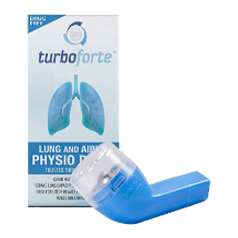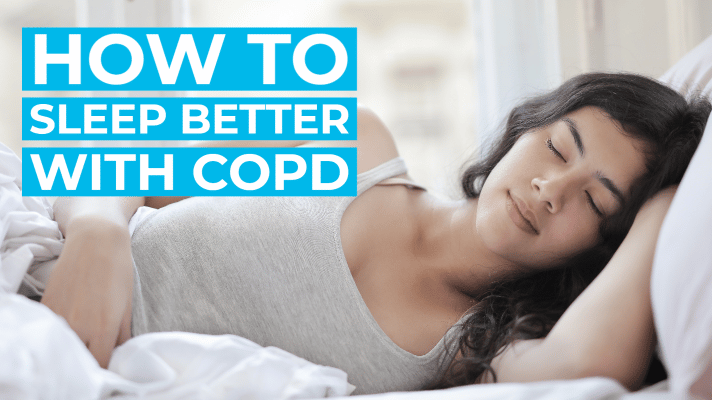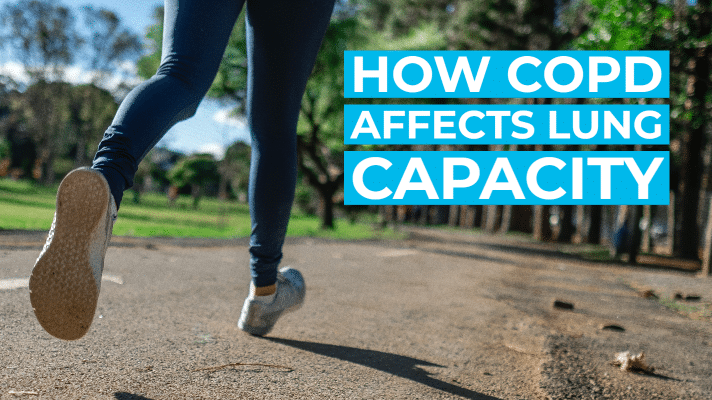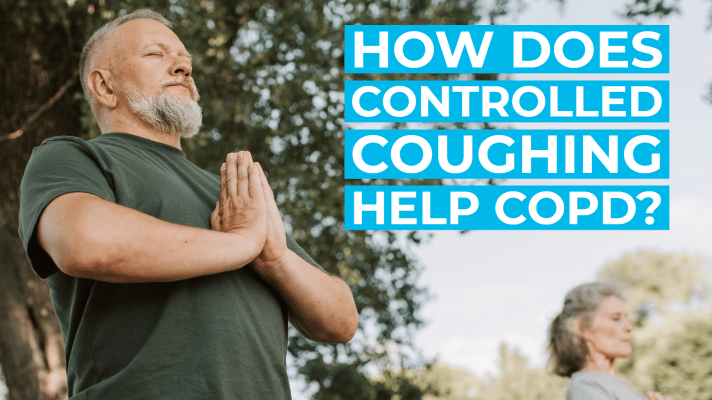What is OPEP Therapy?
Oscillating Positive Expiratory Pressure Therapy (OPEP Therapy) is widely used by healthcare professionals as a drug free non intrusive method assisting those with chronic respiratory conditions. The positive expiratory pressure created by blowing into the device helps expand airways and strengthen lung capacity while the oscillations (or flutter effect) serves to loosen and clear mucus and other unhealthy secretions and environmental irritants from the airways thus making breathing easier. The goal is to expand restricted airways and loosen and expel mucus.
Do I Need an OPEP Device?
OPEP Devices are seen as more effective than standard PEP devices during OPEP Therapy. OPEP Devices are highly recommended for those having difficulty expelling mucus in OPEP Therapy. The vibrations, not present in some PEP devices, help mobilize mucus, allowing easier expulsion of mucus. OPEP Therapy is best utilized by individuals diagnosed with Chronic Obstructive Pulmonary Disease (COPD), Cystic Fibrosis (CF), Atelectasis, Chronic Bronchitis, Bronchiectasis and Asthma.
However, OPEP Therapy cannot be recommended for individuals diagnosed with Tuberculosis, Pneumothorax, Right-side heart failure and conditions that involve coughing up blood. If in doubt, it is best to consult a medical care professional before undergoing OPEP Therapy.
How do OPEP Devices Work?
There are 2 ways that an OPEP device helps with clogged airways; oscillations and positive pressure.
– Oscillation
The stainless steel “flutter” ball, rests on a cone on top of the device. When the patient exhales into the OPEP device, the ball moves upward and downward from its resting position, causing the Oscillation (OPEP) or vibration. This vibration resonates throughout the patient’s airway, helping the mobilization of mucus phlegm and environmental irritants.
– Positive Pressure
Positive Pressure means that an area or region is filled with gases. When exhaling into a flutter valve device, this creates positive pressure along the airways, keeping the airways open. Resistance while exhaling expands the airways, therefore more waste products such as carbon dioxide and mucus can pass through and exit the airway. Coordinating these two parts, the OPEP device opens up the airways and at the same time, the vibrations brought on by the flutter ball reduce the stickiness of the mucus, allowing more mucus to be expelled during the coughing phase of PEP Therapy.
How Effective Are OPEP Devices?
OPEP devices have seen success for patients diagnosed with COPD, Cystic Fibrosis, bronchiectasis and Asthma. A common effect is that of increased mucus clearance and cost effectiveness. Here are the effects of OPEP as seen in several diseases;
– Bronchiectasis
In a 2016 study of 14 patients with Non-CF Bronchiectasis, the researchers utilized a Patient Evaluation Questionnaire (PEQ). The patients were to respond on a scale of 0-10, 0 being no difficulty at all and 10 being very difficult. In the first 3 weeks of daily therapy with OPEP devices, the patients reported improvement in their ease of expelling mucus. The average response before the use of OPEP devices stood at 4.0 and was reduced to 2.9 after use. This shows that patients find expelling mucus easier and more manageable after using OPEP devices.
In addition to easier mucus expulsion, patients also saw a lesser effect of the disease on themselves. In the Patient Global Assessment (PGA), the results showed an average of 4.0 before the OPEP device was used and plummeted to 2.6 after use. This entails relief and improved quality of life among the patients.
– COPD
In a similar study of 27 patients with COPD, the researchers also utilized a PEQ. The research evaluated the effect of OPEP devices for a period of 21-28 days. The results were similar to patients with Bronchiectasis. The patients reported improvement in expelling mucus. The response average before therapy read 3.9 and decreased to 2.7. These results show more controllable mucus expulsion with the use of OPEP devices. Furthermore, the use of OPEP devices was linked to cost-effectiveness among patients diagnosed with COPD. In a 2017 research, it was shown that the use of OPEP devices results in savings amounting to 553 USD per patient. This is due to the lesser amount of exacerbations, as well as better mucus clearance.
How Do I Use an OPEP Device?
– Sit Upright
Sit comfortably on a chair or sofa, such that your back is straight. This assures that circulation along the airway is at its best. Additionally, keep a tissue nearby for the final step.
– Inhale – Device – Exhale
First, with the Turboforte™ away from your mouth, do a slow but deep inhale. The goal is to fill your lungs around two-thirds of the way. Hold your breath for about 3 seconds. Next, place the device’s mouthpiece in your mouth. The mouthpiece should be horizontal to the ground, with the clear end of the device pointing upwards. Finally, put your free hand on your cheeks (hold it as you would hold a sandwich) and exhale forcefully (but not too much) through the device. After which you’d feel an urge to cough, but hold strong and do not cough just yet. A good way to know if you did the steps correctly is by feeling a fluttering effect in your chest and airways. Experiment with adjusting the angle of the device as you blow into it until you achieve maximum flutter effect. Repeat the Inhale-Device-Exhale cycle 5-10 times
– Mucus Expulsion
At the end of the 5-10 cycles, do two more Inhale-Device-Exhale cycles but this time filling your lungs to capacity, then forcefully exhale into the device emptying the lungs completely. The fluttering effect must be at its highest at this point. With all those cycles, the urge to cough is immense. This is the time to pull a tissue and initiate a cough into the tissue. Properly dispose of the tissue after use. It is recommended to use the device hourly, for the continued relief and proper expulsion of mucus throughout the day.
How Do I Clean My OPEP Device?
As OPEP devices come in contact with mucus and other bodily excretions, it is important to clean after use. This is to prevent any further contamination or infection, as well as prevent moisture from building up in the device. Two types of cleaning are recommended when using OPEP devices, a light cleaning and a thorough cleaning.
– Light Cleaning
This type of cleaning is used every after a PEP therapy session is completed. To do light cleaning, simply disassemble the OPEP device (read the user’s manual to avoid breakage) and rinse all the components in tap water. Afterward, wipe dry with a clean towel and reassemble. Store the device in a dry location, away from direct sunlight.
– Thorough Cleaning
Thorough Cleaning is recommended every 2 days. To perform a thorough cleaning, disassemble the device and wash with a mild soap and water solution or detergent and water solution. After washing, rinse with clean tap water, wipe dry with a towel, and reassemble. The device is again stored in a dry location, away from direct sunlight.
Choosing The Best OPEP Device
When choosing OPEP devices, it is important to consider the ease of use. It is also advisable to use products approved by relevant authorities such as FDA in the United States, TGA in Australia and CE certified in Europe. Turboforte™ Lung Physio is a great OPEP device, considering its simple, 3 step procedure, in addition to the straightforward design and cleaning process. Turboforte makes sure you don’t have to take extra breaths in using and maintaining your OPEP device.




